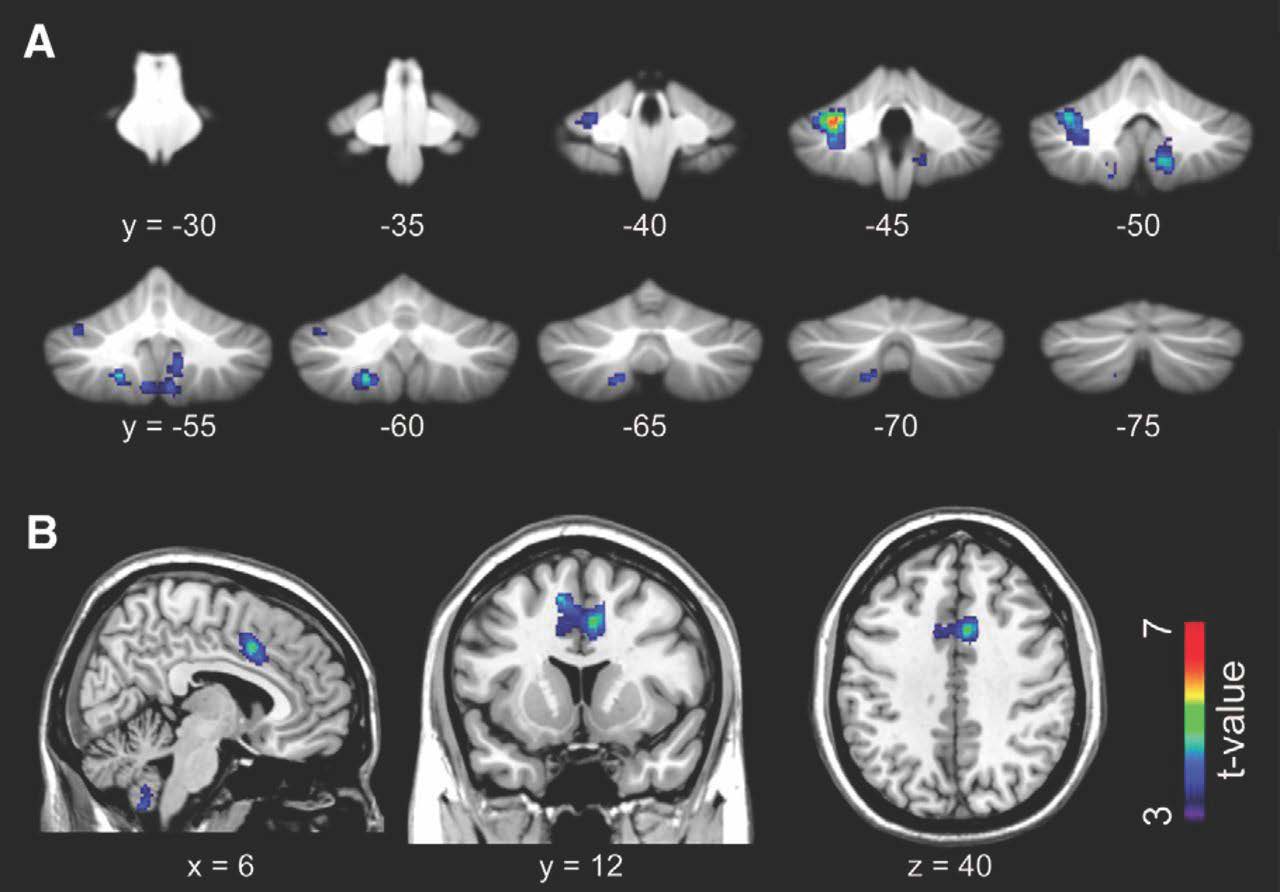Cognition and Behavior
This image shows the inking response from a marine sea slug, Aplysia california, during sensitization training.
The authors show that people use two distinct strategies when choosing between multiple options with an uncertain outcome.
Authors show that microbiome depletion by antibiotics in rats produces widespread changes in the recruitment of neuronal ensembles that are activated by oxycodone intoxication and withdrawal.
Authors explored the role of the Bed Nucleus of the Stria Terminalis in the reinstatement and renewal of fear—two forms of fear relapse that are differentially triggered by stress.
Results of this study suggest that decreased responding to food-associated cues when food becomes less desirable are due to changes in the excitability of neurons in the nucleus accumbens.
Ankan Biswas and Supratim Ray tell the story about their paper that examined whether individuals can better control the power of their EEG-recorded alpha oscillations when provided real-time valid neurofeedback, compared to invalid and neutral neurofeedback.
Authors show that real-time mutual interaction during eye contact is mediated by the cerebellum and limbic mirror system.
This research offers an important contribution to the knowledge of molecular mechanism of worm learning and sensory integration that may be applicable to learning in many organisms.
Dr. Emanuela De Falco tells the story about her co-first author eNeuro paper that describes distinct neural activity states that occur in the medial prefrontal cortex while rats perform an odor span task of working memory capacity.
Editor's Pick: Does Learning a Second Language Rely on Familiarity with Native Language Orthography?
Authors tested whether native English-speaking adults could learn a second, visually atypical writing system, HouseFont, and used neuroimaging data to assess the location of any learning effects.
FOLLOW US
TAGS
CATEGORIES





![Emanuela De Falco, PhD, Postdoctoral Fellow, Indiana University-Purdue University Indianapolis [IUPUI], Indianapolis, IN.](https://blog.eneuro.org/-/media/Project/eNeuroBlog/Beyond-the-Paper-Pics/Emanuela-De-Falco-photo.jpg)
 RSS Feed
RSS Feed




